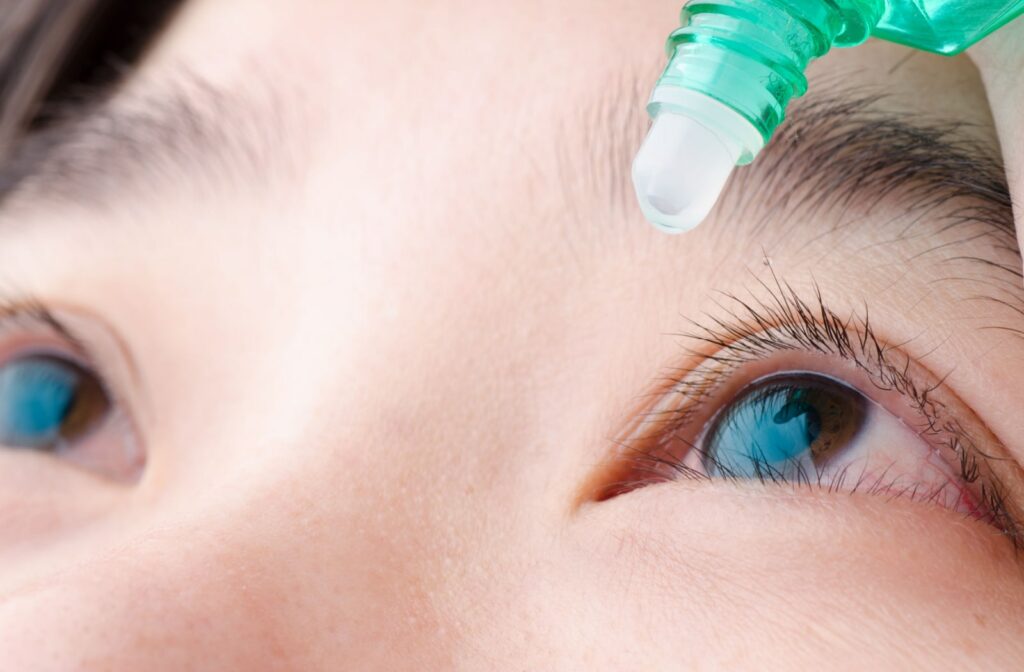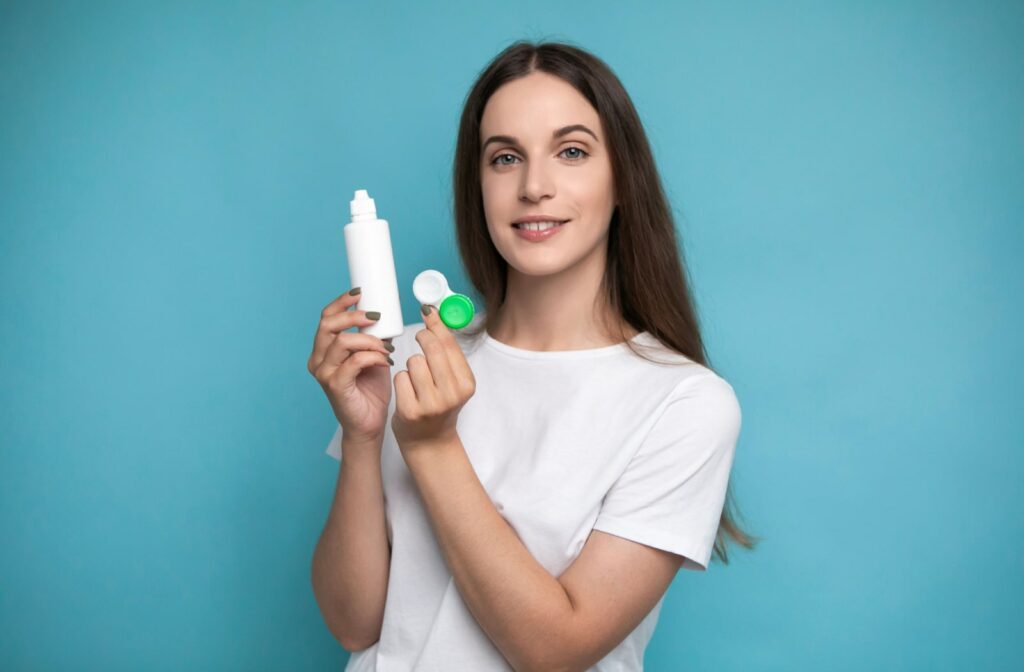Going from wearing eyeglasses all the time to using contact lenses instead is a massive quality of life improvement for many people. Unfortunately, if someone is prone to dry eye syndrome, wearing contacts can aggravate these symptoms.
If dry eyes are a common problem you have, hope is not lost. There are a couple of ways you can improve your comfort while wearing contact lenses. One easy way is by using suitable eye drops. This article explores which eye drops to use when wearing contacts and a couple of other things to consider for increased comfort.
Types of Contact Lenses
There are two main types of contact lenses on the market today. Soft and rigid gas-permeable (RGP) contacts. Each type requires a prescription from an eye doctor and comes with advantages and disadvantages.
Soft Contacts
As the name implies, soft contact lenses are manufactured from soft, flexible materials. They are the easiest to adjust to in most cases and are typically more comfortable than an RGP lens. Modern soft contact lens designs use silicone-hydrogels, which allow a lot more airflow through the lens into the eye.
Because of their soft construction, these lenses are prone to tearing. So, proper handling is essential for making them last. They are also prone to protein buildup, which can affect comfort.
RGP Contacts
Some of the minor issues with soft contact lenses are solved with an RGP lens. For example, they are a bit more resistant to protein buildup. And being constructed from stronger materials, an RGP lens will typically last longer than its soft counterparts. Their longer life makes an RGP lens cheaper in the long run, in most cases.
Even though these lenses typically offer crisper vision compared to a soft contact lens, more time is needed to adjust. And some people simply find an RGP lens too uncomfortable.
Other Variations
Soft and RGP contact lenses both have several variations; they include:
- Extended wear: These lenses are designed for continuous wear ranging from 1 week to 30 days. It’s important to only wear lenses designed for overnight wear while you sleep because they are manufactured in a way that allows enough oxygen to pass through the lens.
- Disposable: There are a few types of disposable lenses available. Some are daily disposables, arguably one of the best for your eyes, because they minimize the chances of contamination or protein buildup on the lens. Other disposables are designed to be thrown out after a predetermined length of time, like 1 week up to a month.
- Specialty Lenses: Some specialty lenses are available for more complex corrections. These include Ortho-k or scleral lenses.

Using Eye Drops With Contact Lenses
Whether you’re using a soft or RGP lens, there are eye drops available that you can use with the lenses still in your eyes. But it’s worth noting that not all eye drops are suitable for this. For example, if your eye doctor gives you a prescription eye drop, unless it’s specified that you can use it with your contacts, you’ll want to remove them before using the drops in your eyes.
Common types of eye drops include:
- Red-eye reducers: These eye drops typically have an ingredient that’s a vasoconstrictor, meaning they work by causing the blood vessels in the eye to constrict. In most cases, these are unsuitable for contact lenses as they will often cause a buildup to form on the lenses.
- Lubricating eye drops: These shouldn’t be confused with a “rewetting eye drop,” even though they often act as a re-wetter as well. A lubricating eye drop typically includes oils to help lubricate the eye for longer. But these oils can hurt a contact lens and cause it to blur temporarily or permanently, in some cases.
- Allergy eye drops: Typically, you cannot use an allergy eye drop while wearing contacts. The pharmacists or your eye doctor will likely recommend that you remove your contact lenses for at least 15 minutes after instilling the eye drops.
- Rewetting eye drops: These are similar to lubricating eye drops. But a significant difference is that some of these drops are designed to wet your eyes and contact lenses. Remember that not all rewetting drops are suitable for contact lens use. If they are, it’s typically labelled in an obvious way.
Other Options for Increased Comfort
Even though some eye drops are safe to use with contact lenses, there may be better ways of dealing with discomfort. A great place to start is a comprehensive eye exam. The eye doctor can get down to the root of your discomfort issues and recommend something better than a rewetting eye drop.
For example, if you’re wearing a disposable contact lens longer than you should or wearing a lens overnight when you shouldn’t be. Both of these can cause dry eye symptoms and other discomforts. So, adhering to a better schedule or changing your contact lenses could improve your eye’s comfort.
Talk to Your Eye Doctor About Using Eye Drops
As a general rule, unless the eye drops specify that they are safe or suitable for use with contact lenses, assume they aren’t. A good first step to comfortable contact lens use is to book a contact lens fitting exam with your optometrist. During the exam, they will ensure you’ve got the right contact lenses for your vision needs.
Give us a call at Toronto Centre Eye Care, and the helpful staff can answer your questions or book you in for that exam.



